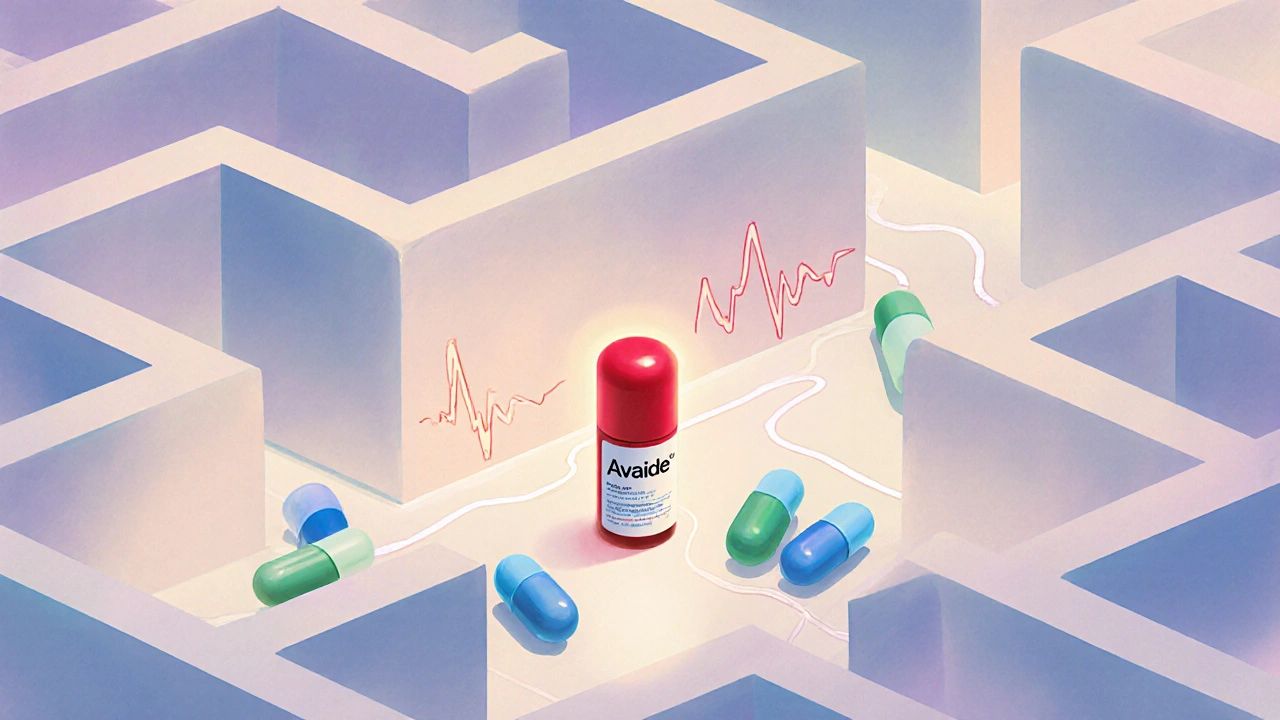Irbesartan – Everything You Need to Know
When working with Irbesartan, a prescription medication that blocks the action of angiotensin II to relax blood vessels and lower blood pressure. Also known as Avapro, it is widely prescribed for managing high blood pressure and for protecting the kidneys in people with diabetes. As an Angiotensin II Receptor Blocker, this drug class prevents angiotensin II from tightening the arteries, which in turn reduces the workload on the heart, Irbesartan fits into a broader strategy of cardiovascular risk reduction. The drug is taken orally, usually once a day, and comes in several strengths to match individual treatment goals. Understanding how Irbesartan works helps you see why doctors pair it with lifestyle changes like diet and exercise to achieve lasting blood‑pressure control.
Irbesartan is most commonly used to treat hypertension, a condition where the force of blood against artery walls is consistently too high, increasing the risk of heart attack, stroke, and kidney damage. By lowering systolic and diastolic numbers, the medication can also alleviate symptoms of heart failure, a state in which the heart cannot pump enough blood to meet the body’s needs. For patients with type 2 diabetes, Irbesartan offers an added benefit: it slows the progression of kidney disease, damage to the kidneys that often accompanies chronic high blood pressure and high blood sugar levels. Typical dosing starts at 150 mg once daily, with adjustments up to 300 mg based on blood‑pressure response and tolerability. Common side effects include dizziness, light‑headedness, and occasional muscle cramps, while serious reactions such as angio‑edema are rare but require immediate medical attention. Irbesartan is generally safe for most adults, but doctors avoid it in pregnancy because it can harm the developing fetus.
How Irbesartan Compares to Other ARBs
When comparing ARBs, many clinicians look at Azilsartan, a newer angiotensin II receptor blocker that may provide slightly greater blood‑pressure reduction in some patients. Clinical trials suggest Azilsartan can achieve lower average systolic pressures, but the difference is modest and cost considerations often keep Irbesartan as the first‑line choice. Both drugs share similar safety profiles, yet Azilsartan’s higher potency sometimes means a lower pill burden for patients needing aggressive control. Other members of the class, such as losartan and valsartan, are also options; each has unique pharmacokinetic traits that may influence dosing frequency and drug‑interaction potential. Choosing between these agents typically depends on individual response, side‑effect tolerance, and insurance coverage. Regardless of the specific ARB, the core principle remains: blocking angiotensin II helps relax arteries, lower blood pressure, and protect organs over the long term. Below you’ll find a curated selection of articles that dive deeper into dosing tips, side‑effect management, and real‑world comparisons, giving you practical insights to make the most of your treatment.
Avalide (Irbesartan) vs. Other Blood Pressure Drugs: A Practical Comparison
A clear comparison of Avalide (Irbesartan) with other blood pressure drugs, covering effectiveness, side effects, cost, and when to choose each option.

